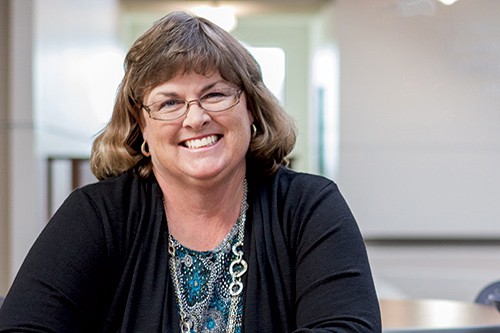
Laura McKnight, MPH, RD, LD, just completed her 20th year of teaching at Idaho State University, in Pocatello, Idaho. In that time, she's worked her way up from adjunct instructor to dietetic programs director. When she was approached in 1994 to teach at ISU, she quickly discovered that she loved teaching and interacting with the students. "I have always loved to learn,” says McKnight. “I discovered that teaching is the best way to learn and keep current.”
What led to your career in nutrition and dietetics?
As an adolescent, I loved to cook and was interested in nutrition. I also had a passion for the health professions, but wasn’t fond of blood and gore. Once in college, I found dietetics to be a perfect fit for my interests.
Tell us more about your work.
My teaching areas are introductory food science, foodservice systems management and community nutrition. The university's dietetic programs have doubled over the last 20 years in the number of both undergraduates and interns. Our faculty number, though, has stayed the same with four full-time and one part-time staff members. We have a strong team with varying specialties, which has helped to develop successful programs.
How has your work made a difference in your community?
A large component of my courses is experiential learning. I have developed many sites where undergraduate students work on projects that benefit the community. These projects range from institutional kitchen redesigns to nutrition and cooking classes for community groups.
There is a local Veteran Services program that assists veterans’ re-entry into the community. It includes both a homeless shelter and a transitional housing facility. I was asked if the dietetic students could provide some cooking and nutrition classes for 12 men of various ages and backgrounds. On a Saturday during football season, this group was required to come to the food laboratory on campus — they were not happy to be there!
The three students teaching the class — all women in their early 20s — were scared to death, but they persevered. They taught a great lesson about cooking during the holidays, with special attention to food safety and using leftovers. The men quickly became engaged in the lesson and cooking activity and then enjoyed a meal with the students and myself. As a result, a six-week cooking class was developed for spring semester. The classes were something the men looked forward to and learned a great deal from — it was a great experience for the veterans and learning to teach a diverse audience instilled confidence in the dietetic students.
What kind of feedback have you received?
Every year as I’m developing my syllabi, I consider what activities will help students to gain experience in the field. I’ve learned to leave it wide open as I get calls from many community members throughout the year with requests for food and nutrition projects. This has provided many great experiences for the students, and has also allowed the community to become educated about the field of dietetics and what services a registered dietitian can provide.
What do you find most rewarding about your efforts?
The most rewarding thing for me is to see a former student succeeding as a registered dietitian with professionalism and a sense of community — giving back.
